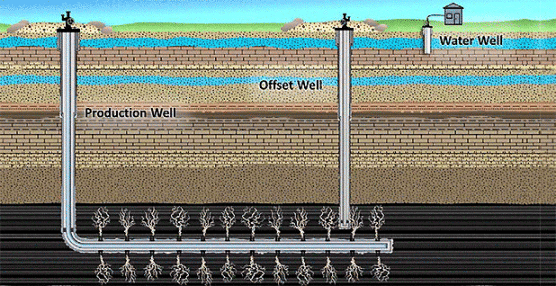Horizontally Drilled Wells Dominate U.S. Oil and Gas Production
In 2004, horizontally drilled wells account for roughly 15% of U.S. crude oil production in tight oil formations. By the end of 2018, that percentage had skyrocketed to 96%.
The Horizontally Drilled Wells allows producers to access more of the oil- and natural gas-bearing rock than drilling vertically.
The lateral length of horizontal wells has also increased. It allows for more exposure to oil and natural gas-producing rock from a single well.
Presently, essentially all (99%) hydrocarbon production from the Marcellus has been from horizontal wells.
Drilling horizontally allows producers to access more of the oil- and natural gas-bearing rock. This will increase exposure to additional hydraulic fracturing. It has greater water volumes and pounds of proppant (small, solid particles, usually sand or a manmade granular solid of similar size).
The lateral length of horizontal wells has also increased, allowing for more exposure to oil- and natural gas-producing rock from a single well. Because tight formations have very low permeability, which prevents oil and gas from moving toward the wellbore, using hydraulic fracturing to increase permeability, along with horizontal drilling, is necessary for oil and gas to be produced from these formations economically.
Read the full article here
Source: kallanishenergy.com
If you have further questions related to the topic, feel free to reach out to us here.




Leave a Reply
Want to join the discussion?Feel free to contribute!